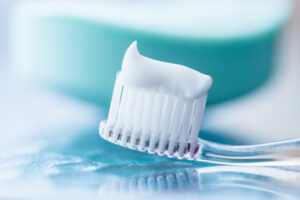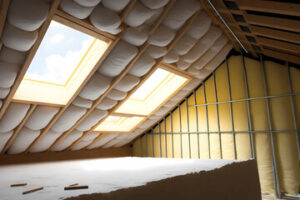When it comes to smile restoration, Implant Dentist Las Vegas emerges as a robust solution with substantial benefits. However, the success of this procedure largely depends on your commitment to oral health and routine dental care.
Achieving a radiant smile involves a thorough clinical process that requires open communication with your dental team. With state-of-the-art treatments, sound advice, and your active participation, a rejuvenated smile is within reach.

Bone Grafting
Bone grafting is a surgery that works to augment or rebuild the jaw bone where an implant may eventually be placed. This allows for a stronger foundation, which can help ensure that an implant is stable and long-lasting. It is especially useful when the implant site lacks sufficient density or thickness due to tooth loss, gum disease, previous extractions, or injury.
A dentist can perform bone grafting using a variety of sources, depending on your unique situation and the location of the area being treated. These include your bone tissue, donated bone from another person (an allograft), bone from an animal such as a pig or cow (a xenograft), and synthetic material. Choosing the right grafting material is crucial, as it can affect how well it heals and integrates with the natural bone.
Once the graft material has been incorporated into your jaw, it will need time to heal, which can take up to half a year. During this time, it is important to stick with your suggested oral care routines and keep up with regular dental appointments to ensure the area remains healthy. If any issues arise, they should be flagged immediately to allow for early resolution.
After the graft is healed, it is ready for implant placement. This is done by making an incision into the gum line and inserting the graft material into the jaw. This is then covered by a collagen membrane and stitched into place.
There are several types of implants available, including endosteal and subperiosteal. Endosteal implants are installed directly into the jawbone, whereas subperiosteal implants are placed on top of the jawbone. A bone graft is sometimes necessary before either type of implant can be placed because it increases the stability and strength of the implant.
A dental implant looks and functions much like a natural tooth, enhancing both the function of your smile and your appearance. The implant acts as a new tooth root, replacing the lost one, and helps prevent further bone deterioration by stimulating the natural bone tissue.
Implant Placement
Dental implants are the gold standard for tooth replacement treatment, offering unparalleled stability akin to natural teeth. They also help prevent bone loss by emulating the function of natural tooth roots, which encourages healthy jawbone growth and stimulates the fusion of bone cells at the implant site.
Before undergoing an implant-supported restoration, you will receive a thorough oral evaluation to ensure your dental health and overall suitability for the procedure. X-rays, CT scans, and an in-depth discussion of your medical history are all part of this comprehensive assessment. During this phase, your dentist can identify issues that could interfere with implant placement, including insufficient bone density.
If you’re missing one or more teeth, your dentist may recommend a bone graft to improve the amount of bone available for placement of an implant. This is usually required for patients who have been missing a tooth for an extended period, and it is a more complicated procedure than simple extraction followed by immediate implant placement.
Once the graft is fully healed, your dentist can proceed with implant surgery. A physical surgical guide is crafted from the virtual treatment plan, allowing your dentist to position the implant with greater accuracy and minimize errors.
After the surgical site is clean and prepared, a small metal piece called an abutment is attached to the implant. This will connect the crown to the implant, allowing it to blend seamlessly into your smile.
Following your doctor’s post-surgical instructions is critical for a successful recovery and the long-term success of your implant. This includes rigorous oral hygiene and frequent visits to your dentist for check-ups. These visits allow your doctor to assess the healing status of your implant, identify early signs of complications, and provide prompt solutions. It is also important to be attentive and recognize any persistent pain, swelling, or discharge from the surgical site so they can be addressed promptly.
Implant Restoration
Dental implants are a standout way to replace missing teeth, delivering aesthetically pleasing results that also enhance oral function and overall well-being. Unlike alternative solutions like dentures, implant restoration provides the benefit of a permanent fix that helps preserve your bone structure and prevents nearby teeth from shifting and becoming misaligned. As a result, it’s important to understand the full scope of the implant restoration process before embarking on this transformative journey.
During an implant consultation, your dentist will evaluate your dental health to ensure that you are a candidate for this treatment option. If there are any underlying issues, such as gum disease, your dentist will work to resolve these first before pursuing the dental implant procedure.
If your evaluation indicates that your jawbone isn’t sufficiently strong enough for implant placement, the next step is a surgical procedure known as bone grafting. Similar to how a foundation is laid for a home, this surgery creates new bone tissue to add structure to your jaw, ensuring that the implant can fuse with it effectively.
Once the recovery process following bone grafting is complete, your dentist can then proceed with implant placement. During this step, your dental implant will be inserted into the jawbone, where it goes through a process called osseointegration to become part of your smile’s foundation. A connecting abutment will be built on or placed over the implant, and the replacement tooth (dentist-selected depending on your unique needs) will then be affixed onto the abutment.
Once the dental implant has been fully restored, it’ll look and feel just like a natural tooth, allowing you to confidently smile again. The aesthetic of your implanted artificial tooth is carefully crafted to match your natural teeth’s size, shape, and color, giving your smile a fully functioning, perfectly natural appearance. With the right care, your implant will last for years and improve your quality of life. This is why it’s important to follow your dentist’s suggestions for brushing, flossing, and dental appointments to keep your implant in great condition. Taking this approach to your implant restoration can help you avoid future complications that would necessitate costly repairs or even a replacement of your dental implant.
Maintenance
After undergoing such a transformative dental procedure, you deserve to get the most out of your investment. That’s why it’s crucial to be well-informed and proactively address any signs of trouble with your implant. By doing so, you can keep your implants healthy and in optimal condition, allowing them to thrive and provide you with years of beautiful smiles.
Providing an aesthetically pleasing and durable tooth replacement solution, dental implants are made up of three main components: the implant, abutment, and crown. The implant itself is a replacement for the root of a missing tooth, fusing with the jawbone to restore its structural integrity and support a crown, bridge, or denture. The abutment is the connector between the implant and the crown, which is custom-designed to match the shape and appearance of your natural teeth.
Once affixed to the abutment, the crown resembles a natural tooth, bringing lifelike stability and beauty to your smile. This crown also stimulates the jawbone, preventing its degeneration and preserving the overall health of your mouth. By delivering superior aesthetics, durability, and functional performance, dental implants surpass alternatives like dentures and fixed bridges.
With meticulous oral hygiene and regular professional care, your dental implants can last a lifetime! But the journey isn’t over once you cross the finish line. Maintaining impeccable oral health and addressing any issues promptly is the best way to ensure your dental implants thrive, ensuring they remain the perfect foundation for your confident smile.
The complex intricacies of a dental implant may seem intimidating at first, but tackling it step-by-step can help make the process more manageable and approachable. As a result, the implant journey becomes an inspiring voyage towards your radiant smile. With the right team by your side, a dazzling smile isn’t just a distant dream; it’s a soon-to-be reality! With state-of-the-art treatments, sound advice, and your active involvement, that coveted smile is within reach. Let’s make it happen! Start your dental implant journey today. Schedule your appointment with our friendly staff. We look forward to seeing you!








